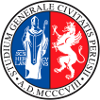Study-unit
| Course name | Mechanical engineering |
|---|---|
| Study-unit Code | A002364 |
| Curriculum | Comune a tutti i curricula |
| Lecturer | Elisabetta Zanetti |
| Lecturers |
|
| Hours |
|
| CFU | 6 |
| Course Regulation | Coorte 2023 |
| Supplied | 2024/25 |
| Supplied other course regulation | |
| Learning activities | Caratterizzante |
| Area | Ingegneria meccanica |
| Sector | ING-IND/15 |
| Type of study-unit | Obbligatorio (Required) |
| Type of learning activities | Attività formativa monodisciplinare |
| Language of instruction | Italian |
| Contents | The course introduces formalized design techniques for new product design. Main topics of the course are: theory of design process, organization and planning of new products design, modern inventive techniques, techniques for generating robust solutions, techniques for embodiment design. A particular emphasis will be given to specific topics as TRIZ and quality management. |
| Reference texts | Reference Literature Product Design and Development by Karl Ulrich and Steven Eppinger |
| Educational objectives | The course introduces formalised design techniques for new product design. Main topics of the course are: theory of design process, organization and planning of new products design, modern inventive techniques, techniques for generating robust solutions, techniques for embodiment design. |
| Prerequisites | Machine design |
| Teaching methods | The course consists of 48 hours of academic lectures. Having followed theoretic lessons, students must choose and develop the conceptual design of a product . Students are encouraged to create design teams of two up to four persons (depending on the difficulties of the project). |
| Learning verification modality | The oral exam includes: - Discussion of the project. The discussion will involve each team component, separately. - Questions concerning theoretical aspects illustrated in the course |
| Extended program | 1- New products design, design process planning, mission statement. 2- The seven steps of the preliminary design process: costumer needs, specs definition, concept generation, design selection, design(s) testing, final specifications, development planning. 3- Customer needs identification: - Techniques to understand customers’ needs, - Comparison with competitors’ products, - Laws of systems evolution. 4- Product specifications. - Technical formulation of customers needs - Quality function deployment 5- Concept generation - Axiomatic design - TRIZ (Theory of inventive problem solving) 6- Concept selection 7 Quality in design - Material Selection 8- Virtual and physical prototyping at the different design stages. 9- Aesthetic design 10- Design evaluation 11- Economical aspects |


